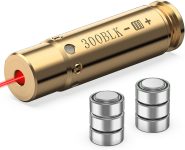
MidTen Red Bore Sight Laser Review 300 blackout – Oemiu
MidTen Red Bore Sight Laser Review: Zeroing Your 300 Blackout Rifle with Ease
Achieving pinpoint accuracy with your firearm requires precision, and a critical step in that journey is properly zeroing your optic. Whether you’re an experienced marksman or a novice shooter, the process of zeroing can be time-consuming and require multiple trips to the range. This is where bore sights come into play, offering a convenient and cost-effective method to get you on paper faster and save precious ammunition. In this comprehensive review, we’ll delve into the MidTen Red Bore Sight Laser, specifically its application for 300 blackout rifles. We’ll explore its features, benefits, limitations, and how it stacks up against other bore sighting options in the market. Our focus will be on providing you with a detailed understanding of the MidTen bore sight, enabling you to make an informed decision about whether it’s the right tool to enhance your shooting experience and optimize your 300 blackout rifle’s performance.
Understanding Bore Sighting and Its Importance
Before diving into the specifics of the MidTen bore sight, let’s establish a solid understanding of what bore sighting entails and why it’s so important. Bore sighting is the process of visually aligning the barrel of your firearm with your optic, whether it’s a scope, red dot sight, or iron sights. The goal is to get the optic and the barrel pointing in roughly the same direction. This initial alignment minimizes the amount of adjustment needed when you eventually fine-tune your zero at the shooting range. Without bore sighting, you could potentially waste a significant amount of ammunition just trying to get your shots on the target. This is especially crucial for calibers like the 300 blackout, where ammunition can be pricier than more common rounds. Furthermore, excessive adjustments can strain your optic’s internal mechanisms, potentially shortening its lifespan. Bore sighting saves time, money, and wear and tear on your equipment. It’s a fundamental step in ensuring your firearm is properly calibrated for accurate and consistent shooting. The initial investment in a quality bore sight can quickly pay for itself in ammunition savings and increased shooting efficiency. Considering the varying ballistic properties of different ammunition types, including specific 300 blackout loads, bore sighting also allows you to establish a baseline for various types of rounds before heading to the range.
Several methods exist for bore sighting, ranging from traditional visual techniques using a bore sighting tool to more modern laser bore sights. Visual methods involve physically looking through the bore and aligning the sights with a distant target. Laser bore sights, like the MidTen, project a laser beam down the barrel, providing a highly visible reference point for aligning the optic. The laser beam essentially acts as a proxy for the bullet’s trajectory, allowing you to quickly adjust your optic to match the laser’s point of impact at a specified distance. While laser bore sights offer speed and convenience, it’s important to remember that they are not a substitute for live-fire zeroing. A bore sight only gets you close; you’ll still need to fine-tune your zero with actual ammunition to account for factors like bullet drop, wind drift, and individual firearm characteristics. Nevertheless, a good bore sight significantly reduces the amount of fine-tuning required, making the overall zeroing process much more efficient. For those shooting suppressed 300 blackout rifles, bore sighting becomes even more crucial as suppressors can alter the point of impact. A bore sight allows you to establish a new baseline zero with the suppressor attached, saving you even more time and ammunition at the range.
MidTen Red Bore Sight Laser: Features and Design
The MidTen Red Bore Sight Laser is designed as a chamber-inserted device, meaning it’s shaped like a cartridge and fits directly into the chamber of your 300 blackout rifle. This design offers several advantages over muzzle-inserted bore sights. Chamber-inserted bore sights tend to be more accurate as they are consistently centered within the bore. This reduces the potential for error caused by variations in barrel diameter or muzzle wear. The MidTen bore sight is constructed from high-quality aluminum, ensuring durability and resistance to wear and tear. The red laser emitter is housed within the aluminum casing, and the device is powered by readily available batteries (typically LR44 or similar button-cell batteries). The bore sight emits a bright red laser beam, which is easily visible in various lighting conditions, although its visibility may be reduced in bright sunlight. The laser’s wavelength is typically around 635-650nm, a common and widely used wavelength for laser pointers and bore sights. The MidTen bore sight is designed to be simple and user-friendly. No complicated assembly or calibration is required. Simply insert the bore sight into the chamber, close the bolt, and the laser will project a beam down the barrel. You can then adjust your optic to align with the laser’s point of impact at a specified distance, typically 25 or 50 yards. The device usually comes with multiple adapters to accommodate different calibers or chamber dimensions, ensuring a snug and secure fit within your 300 blackout rifle. The adapters are also made from durable materials to withstand repeated use.
The power source for the MidTen Red Bore Sight Laser is typically a set of small button-cell batteries. These batteries are commonly available at most drugstores and hardware stores. The battery life of the bore sight is generally adequate for multiple bore sighting sessions, but it’s always a good idea to carry spare batteries, especially if you’re planning on using the bore sight extensively. Some users have reported variations in battery life depending on the brand of batteries used. High-quality batteries tend to last longer than cheaper alternatives. The bore sight features an on/off switch, usually located on the rear of the device, to conserve battery power when not in use. It’s crucial to remember to switch off the bore sight after each use to prevent unnecessary battery drain. The MidTen bore sight is compact and lightweight, making it easy to transport and store in your range bag. Its small size also means it won’t add significant weight to your rifle. The bore sight is designed to be compatible with a wide range of 300 blackout rifles, including AR-15 pistols and carbines chambered in 300 blackout. However, it’s always a good idea to check the compatibility of the bore sight with your specific firearm model before purchasing. While the MidTen bore sight is a valuable tool for zeroing your rifle, it’s important to use it responsibly and in accordance with all applicable laws and regulations. Never point the laser beam at anyone’s eyes, and always treat your firearm with the utmost respect and caution.
Using the MidTen Bore Sight: A Step-by-Step Guide
Effectively utilizing the MidTen Red Bore Sight Laser requires a systematic approach. First and foremost, ensure your firearm is unloaded and safe. Remove the magazine and visually inspect the chamber to confirm it is empty. Then, select the appropriate adapter for your 300 blackout rifle. The adapter should fit snugly into the chamber without excessive force. Insert the adapter into the bore sight. Next, insert the bore sight into the chamber of your rifle, just as you would a regular cartridge. Close the bolt gently. The laser should now project a red dot down the barrel. If the laser does not illuminate, check the battery orientation and ensure the on/off switch is in the “on” position. Position your rifle in a stable rest, such as a shooting bench or bipod, pointing towards a target at a known distance, typically 25 or 50 yards. Ensure the target is well-lit and easily visible. Look through your optic and note the position of the red laser dot on the target. Adjust your optic’s windage and elevation turrets to bring the reticle or aiming point into alignment with the laser dot. Make small, incremental adjustments and recheck the alignment after each adjustment. Once the reticle is aligned with the laser dot, you have completed the initial bore sighting process. This will get you on paper at the range. Remember that this is just a starting point. Live-fire zeroing is still necessary to fine-tune your zero and account for real-world shooting conditions. To remove the bore sight, simply open the bolt and eject the device from the chamber. Store the bore sight and adapters in a safe and dry place.
During the bore sighting process, pay attention to the consistency of the laser dot’s position. If the laser dot appears to shift or wobble, it could indicate a loose adapter or a problem with the bore sight itself. If you encounter any issues, stop the process and recheck all connections and components. Ensure the bore sight is properly seated in the chamber and the adapter is securely attached. It’s also important to consider the ambient lighting conditions when bore sighting. In bright sunlight, the red laser dot may be difficult to see. Try bore sighting in a shaded area or indoors to improve visibility. When making adjustments to your optic, follow the manufacturer’s instructions carefully. Over-tightening the turrets can damage the optic. Make small, incremental adjustments and recheck the alignment after each adjustment. After completing the bore sighting process, make a note of the windage and elevation settings on your optic. This will provide a valuable reference point for future zeroing sessions. It’s also a good idea to keep a log of your zeroing data, including the date, time, ammunition type, and weather conditions. This information can help you track your rifle’s performance and identify any potential issues. Remember, the goal of bore sighting is to get you close to your desired zero. Live-fire zeroing is still essential for achieving optimal accuracy. After bore sighting, head to the range and fire a few shots at your target. Adjust your optic as needed to fine-tune your zero. The 300 blackout cartridge is known for its versatility, offering both subsonic and supersonic loads. When zeroing your rifle, it’s important to use the same type of ammunition that you plan to use for hunting or target shooting. Subsonic and supersonic loads have different ballistic characteristics, so zeroing with one type of ammunition may not be accurate with the other. For 300 blackout rounds, particularly subsonic loads, it’s advisable to zero at a closer range, such as 50 yards, due to their significant bullet drop at longer distances.
Pros and Cons of the MidTen Red Bore Sight Laser
As with any product, the MidTen Red Bore Sight Laser has its strengths and weaknesses. Understanding these pros and cons will help you determine if it’s the right choice for your needs.
- Pros:
- Ease of Use: The MidTen bore sight is incredibly easy to use, requiring minimal setup and technical expertise. Simply insert it into the chamber, and you’re ready to go.
- Time-Saving: It significantly reduces the time and ammunition required to zero your optic, especially when compared to traditional methods.
- Cost-Effective: It saves money on ammunition by getting you on paper faster.
- Durable Construction: The aluminum construction ensures durability and long-lasting performance.
- Compact and Lightweight: It’s easy to transport and store in your range bag.
- Chamber-Inserted Design: Offers more accurate alignment compared to muzzle-inserted bore sights.
- Cons:
- Limited Visibility in Bright Sunlight: The red laser dot may be difficult to see in bright sunlight, requiring you to bore sight in shaded areas or indoors.
- Battery Life: The battery life may vary depending on the brand of batteries used, and it’s essential to remember to switch off the device after each use to conserve power.
- Not a Substitute for Live-Fire Zeroing: It only gets you close to your desired zero; live-fire zeroing is still necessary to fine-tune your accuracy.
- Potential for Misalignment: If the adapter is not properly seated or the bore sight is damaged, it can lead to misalignment and inaccurate bore sighting.
The MidTen Red Bore Sight Laser offers a convenient and efficient way to initially align your optic with your 300 blackout rifle’s barrel. Its ease of use and cost-effectiveness make it a valuable tool for both novice and experienced shooters. However, it’s important to be aware of its limitations, such as limited visibility in bright sunlight and the need for live-fire zeroing. By understanding these pros and cons, you can make an informed decision about whether the MidTen bore sight is the right choice for your shooting needs. In terms of value, it delivers a significant advantage, but a shooter must recognize that it is not a replacement for skill. Consider carefully the kind of shooting you will be doing. A long range 300 blackout is generally impractical, but is it something you might attempt? Knowing this will help you decide if you should try a different sort of tool.
Alternatives to the MidTen Bore Sight
While the MidTen Red Bore Sight Laser is a popular choice, several alternatives are available, each with its own advantages and disadvantages. One alternative is a traditional visual bore sighting tool. These tools typically consist of a series of arbors that fit snugly into the muzzle of your rifle. You then look through the tool and align your optic with a distant target. Visual bore sighting tools are generally less expensive than laser bore sights, but they can be more time-consuming and require more technical skill. Another alternative is a magnetic bore sight. These bore sights attach magnetically to the muzzle of your rifle and project a laser beam down the barrel. Magnetic bore sights are generally more versatile than chamber-inserted bore sights, as they can be used with a wider range of calibers. However, they may not be as accurate as chamber-inserted bore sights, as the magnetic attachment can be less precise. Another option is a laser rangefinder with bore sighting capabilities. These devices combine the functionality of a laser rangefinder with a bore sight, allowing you to measure distances to targets and align your optic at the same time. Laser rangefinders with bore sighting capabilities are generally more expensive than standalone bore sights, but they offer added functionality. For advanced shooters, particularly those engaging in precision shooting or long range 300 blackout applications (though less common), high-end optical bore sighting systems are available. These systems often use sophisticated lenses and reticles to provide highly accurate alignment. However, they are typically significantly more expensive than other bore sighting options.
Ultimately, the best bore sighting method for you will depend on your individual needs and preferences. Consider your budget, the type of shooting you do, and your level of technical skill when making your decision. If you’re looking for a simple, cost-effective, and easy-to-use option, the MidTen Red Bore Sight Laser is a great choice. If you need a more versatile option that can be used with a wider range of calibers, a magnetic bore sight may be a better fit. If you’re looking for added functionality, a laser rangefinder with bore sighting capabilities may be worth considering. And if you require the highest level of accuracy, a high-end optical bore sighting system may be necessary. No matter which bore sighting method you choose, remember that live-fire zeroing is still essential for achieving optimal accuracy. A bore sight only gets you close; you’ll still need to fine-tune your zero with actual ammunition to account for real-world shooting conditions. You also need to consider the type of optic being sighted in. A red dot, for example, is generally not ideal for long-range use, even with a magnifier. A low power variable optic (LPVO), on the other hand, allows for great flexibility.
| Bore Sight Type | Pros | Cons | Price Range |
|---|---|---|---|
| MidTen Red Bore Sight Laser (Chamber-Inserted) | Easy to use, time-saving, cost-effective, durable. | Limited visibility in bright sunlight, requires specific caliber adapter. | $20 – $40 |
| Visual Bore Sighting Tool | Inexpensive, no batteries required. | More time-consuming, requires more technical skill. | $10 – $30 |
| Magnetic Bore Sight | Versatile, can be used with a wider range of calibers. | Potentially less accurate than chamber-inserted models. | $30 – $60 |
| Laser Rangefinder with Bore Sighting | Added functionality (range finding), convenient. | More expensive, may not be as accurate as dedicated bore sights. | $200+ |
| High-End Optical Bore Sighting System | Highly accurate. | Very expensive. | $500+ |
FAQ
What is bore sighting, and why is it important?
Bore sighting is the process of aligning the barrel of your firearm with your optic (scope, red dot sight, or iron sights) before heading to the shooting range. It’s a crucial step because it gets your optic and barrel pointing in roughly the same direction, minimizing the amount of adjustment needed during live-fire zeroing. Think of it as a preliminary aiming step that saves you time, ammunition, and frustration. Without bore sighting, you could waste a significant number of rounds just trying to get your shots on the target. This is particularly important for calibers like the 300 blackout, where ammunition can be more expensive. Furthermore, excessive adjustments can strain your optic’s internal mechanisms. By bore sighting, you’re essentially giving yourself a head start in the zeroing process, ensuring that your first shots at the range are much closer to your intended point of impact. It’s a best practice that’s worth the time and effort.
How does the MidTen Red Bore Sight Laser work?
The MidTen Red Bore Sight Laser is a chamber-inserted device that mimics the shape of a cartridge. You insert it into the chamber of your 300 blackout rifle, and it projects a red laser beam down the barrel. This laser beam acts as a visual representation of where your bullet would theoretically impact at a certain distance (usually 25 or 50 yards). You then look through your optic and adjust the windage and elevation turrets until the reticle or aiming point is aligned with the laser dot on the target. Once the optic and laser dot are aligned, your optic and barrel are roughly parallel. This means that when you fire your first shots at the range, they should be much closer to the center of the target than they would be without bore sighting. The laser essentially gives you a visible reference point for making initial adjustments to your optic, making the zeroing process faster and more efficient.
Is the MidTen Bore Sight compatible with all 300 blackout rifles?
The MidTen Red Bore Sight Laser is generally designed to be compatible with a wide range of 300 blackout rifles, including AR-15 pistols and carbines chambered in 300 blackout. However, it’s always a good idea to check the compatibility of the bore sight with your specific firearm model before purchasing. Some rifles may have slightly different chamber dimensions or tolerances, which could affect the fit of the bore sight. The MidTen bore sight typically comes with multiple adapters to accommodate different calibers or chamber dimensions. Make sure to select the appropriate adapter for your 300 blackout rifle to ensure a snug and secure fit. If you’re unsure about compatibility, consult the manufacturer’s website or contact their customer support team. It’s better to be safe than sorry and ensure that the bore sight is compatible with your rifle before using it.
How far away should I set my target when using the MidTen Bore Sight?
The optimal distance for setting your target when using the MidTen Red Bore Sight Laser is typically 25 or 50 yards. These distances are commonly used for bore sighting and allow you to make accurate initial adjustments to your optic. The specific distance you choose will depend on your personal preference and the type of shooting you plan to do. For closer-range shooting, such as home defense or target practice at shorter distances, 25 yards may be sufficient. For longer-range shooting, such as hunting or target practice at extended distances, 50 yards may be a better choice. It’s important to remember that the bore sight only gets you close to your desired zero; live-fire zeroing is still necessary to fine-tune your accuracy at the actual distances you plan to shoot. When bore sighting, make sure the target is well-lit and easily visible. This will make it easier to align your optic with the laser dot. Also, ensure that your rifle is securely rested on a stable surface to minimize movement and improve accuracy.
Is the MidTen Bore Sight a substitute for live-fire zeroing?
No, the MidTen Red Bore Sight Laser is not a substitute for live-fire zeroing. While it’s a valuable tool for getting you close to your desired zero, it’s not a replacement for actually firing rounds downrange and making fine-tune adjustments to your optic. A bore sight only provides a visual alignment between your barrel and optic; it doesn’t account for factors like bullet drop, wind drift, or individual firearm characteristics. Live-fire zeroing is essential for confirming your zero and ensuring that your shots are hitting your intended point of impact at the distances you plan to shoot. After bore sighting, head to the range and fire a few shots at your target. Adjust your optic as needed to fine-tune your zero. It’s also a good idea to keep a log of your zeroing data, including the date, time, ammunition type, and weather conditions. This information can help you track your rifle’s performance and identify any potential issues. Live fire is always the final arbiter in determining your zero.
How long do the batteries last in the MidTen Bore Sight?
The battery life of the MidTen Red Bore Sight Laser can vary depending on the brand of batteries used and the frequency of use. The bore sight typically uses small button-cell batteries (usually LR44 or similar), which are commonly available at most drugstores and hardware stores. High-quality batteries tend to last longer than cheaper alternatives. To maximize battery life, it’s essential to remember to switch off the bore sight after each use. Leaving the bore sight on when not in use will quickly drain the batteries. It’s also a good idea to carry spare batteries with you, especially if you’re planning on using the bore sight extensively. Some users have reported getting several hours of use out of a single set of batteries, while others have experienced shorter battery life. The key is to use quality batteries and conserve power by switching off the device when not in use.
Can I use the MidTen Bore Sight with a suppressed 300 blackout rifle?
Yes, you can use the MidTen Red Bore Sight Laser with a suppressed 300 blackout rifle. However, it’s important to understand that attaching a suppressor can alter the point of impact of your bullets. This is because the suppressor adds weight to the end of the barrel and can affect the barrel’s harmonics. When bore sighting a suppressed rifle, it’s best to do so with the suppressor attached. This will allow you to establish a new baseline zero that accounts for the suppressor’s effect on the bullet’s trajectory. After bore sighting with the suppressor attached, you’ll still need to live-fire zero your rifle to fine-tune your accuracy. It’s also a good idea to keep a separate log of your zeroing data for when the suppressor is attached and when it’s detached. This will allow you to quickly switch between suppressed and unsuppressed configurations without having to re-zero your rifle each time. Remember, consistency is key when shooting with a suppressor. Make sure to always attach the suppressor in the same way each time to ensure consistent performance.
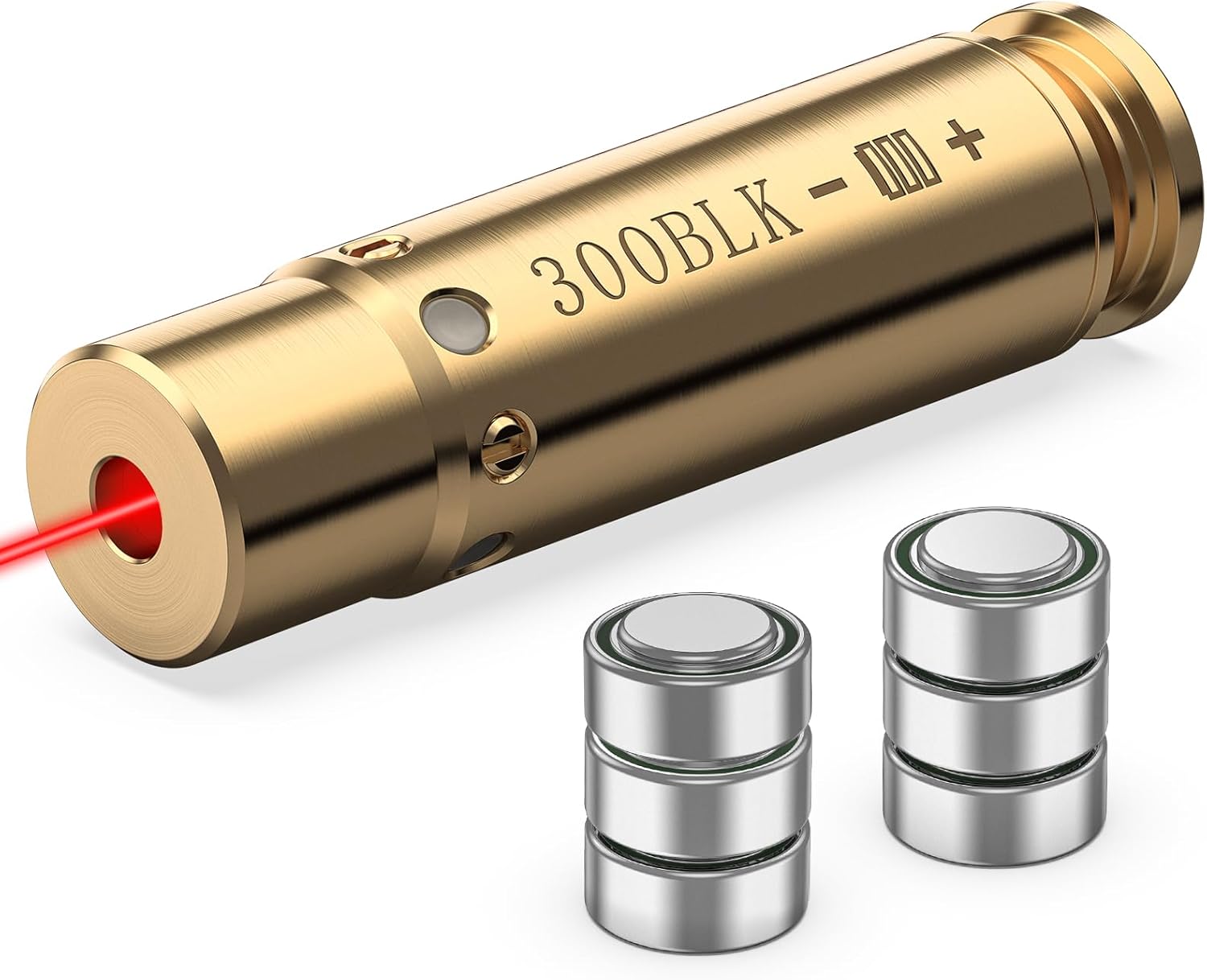
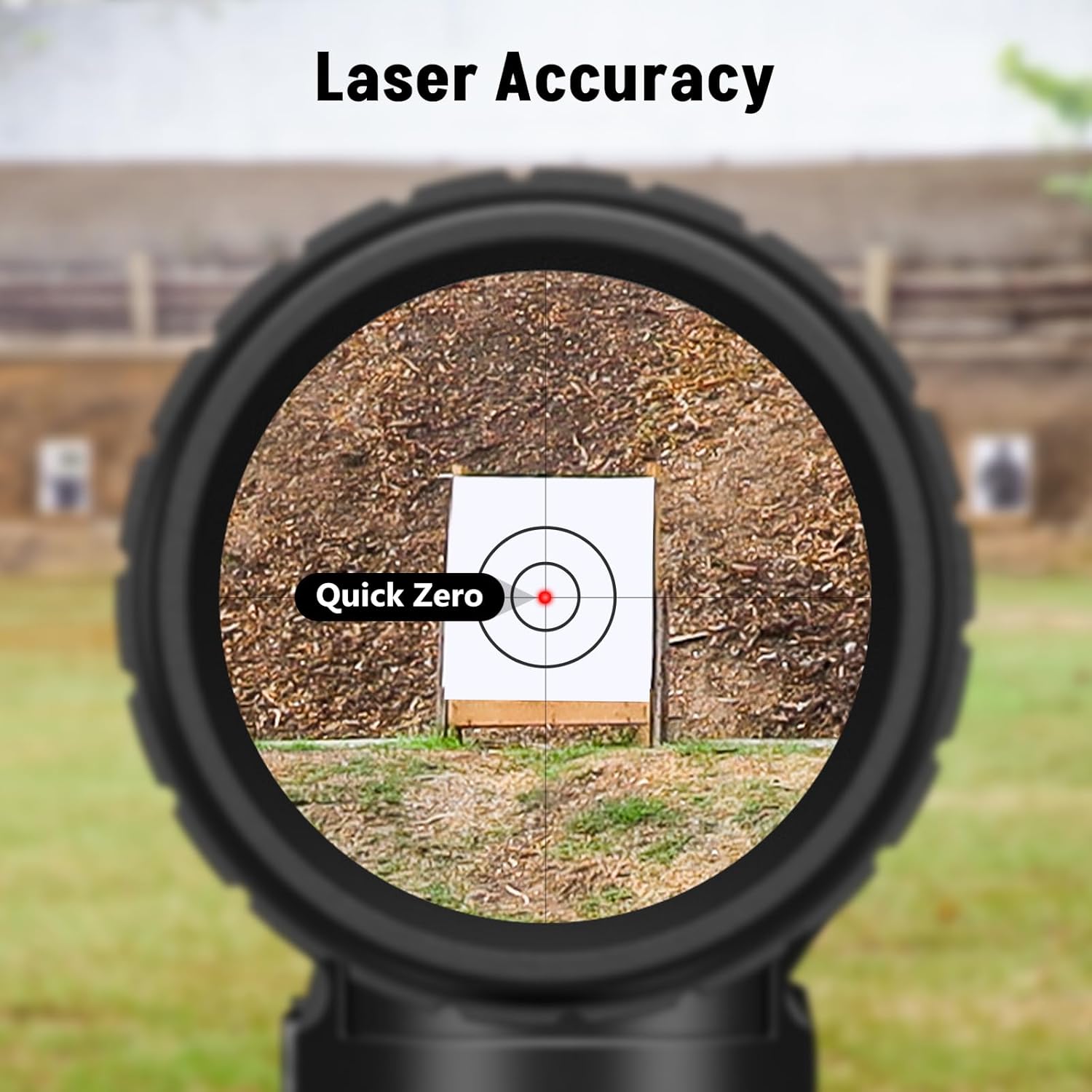
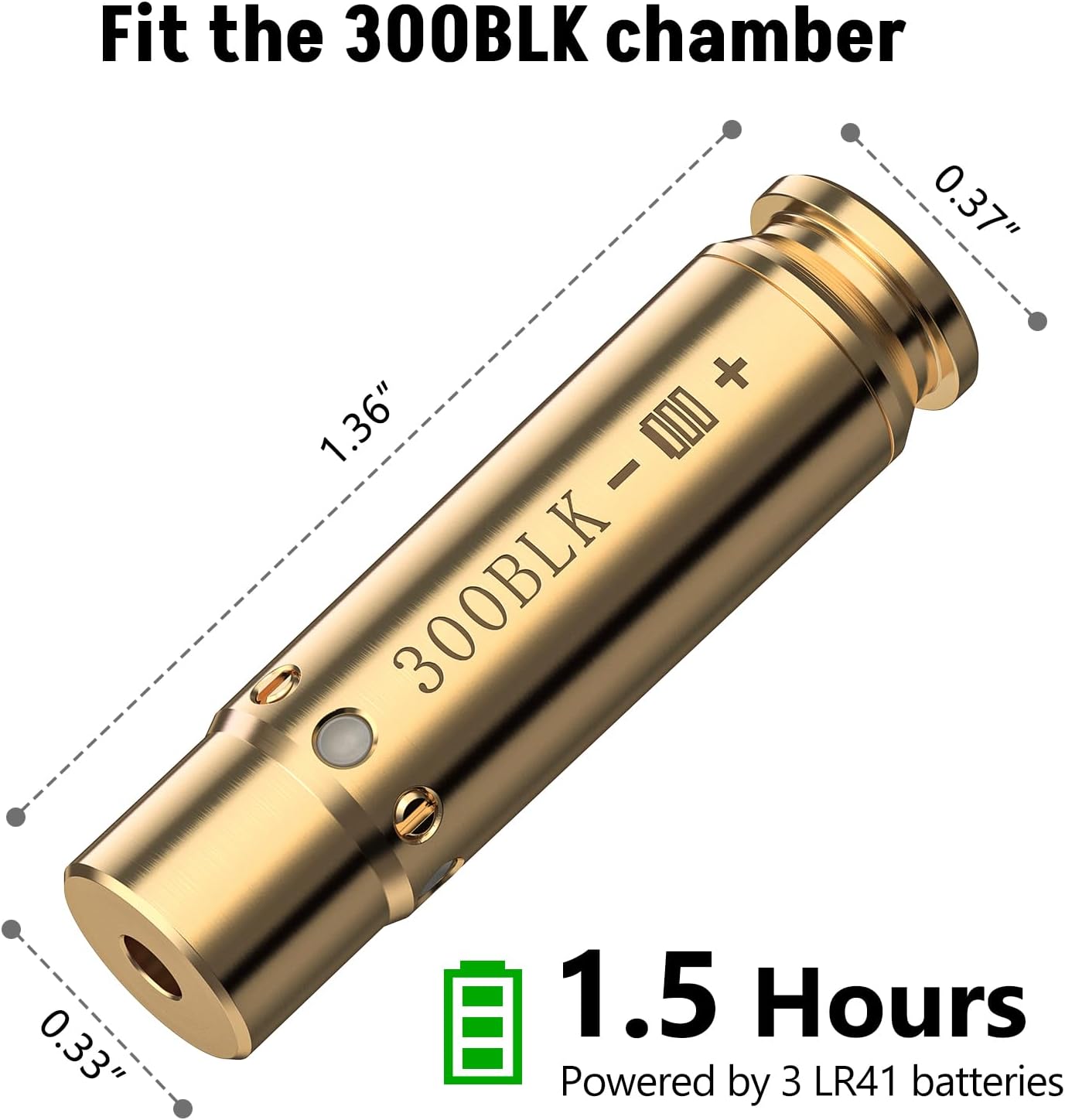

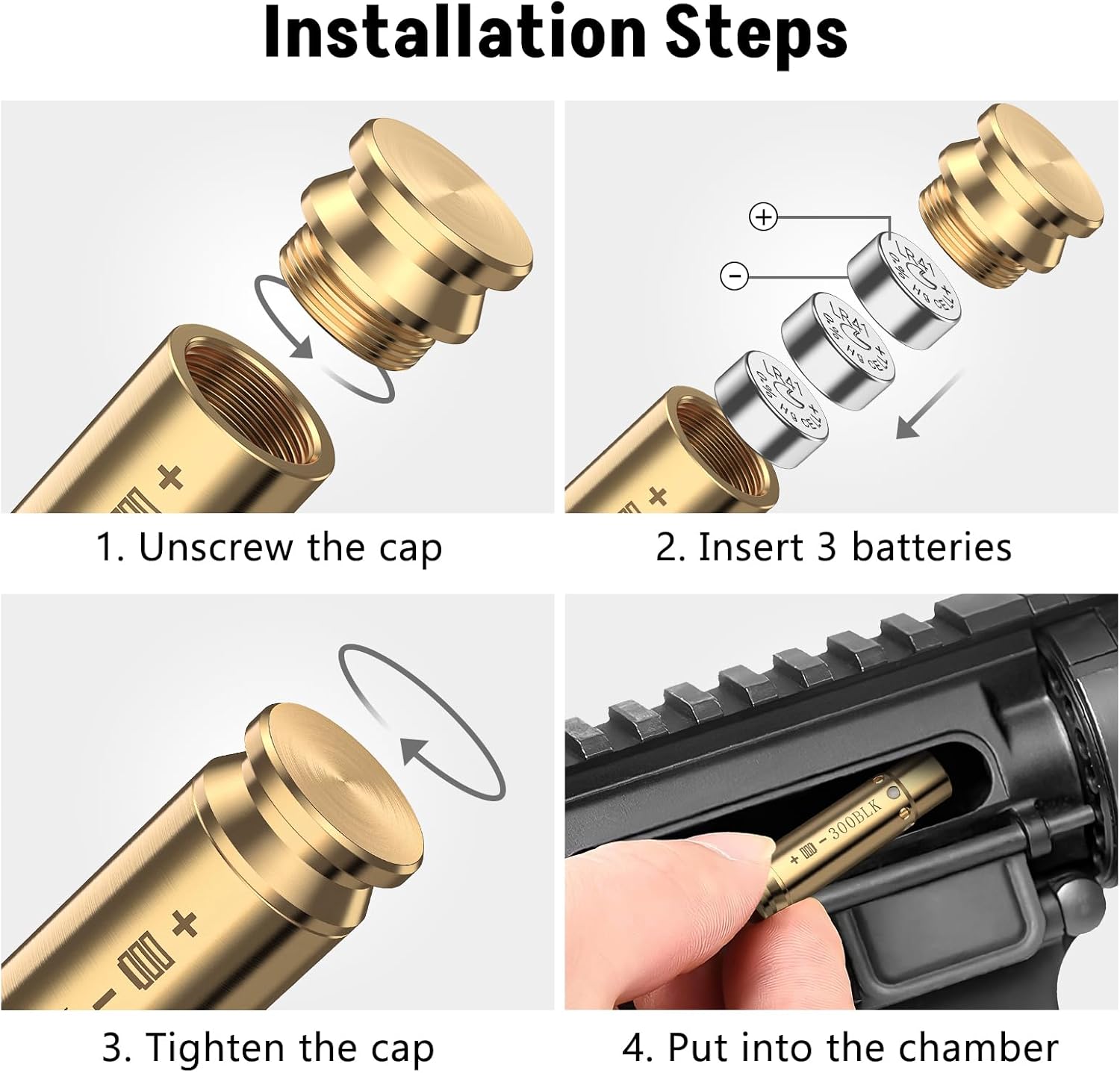
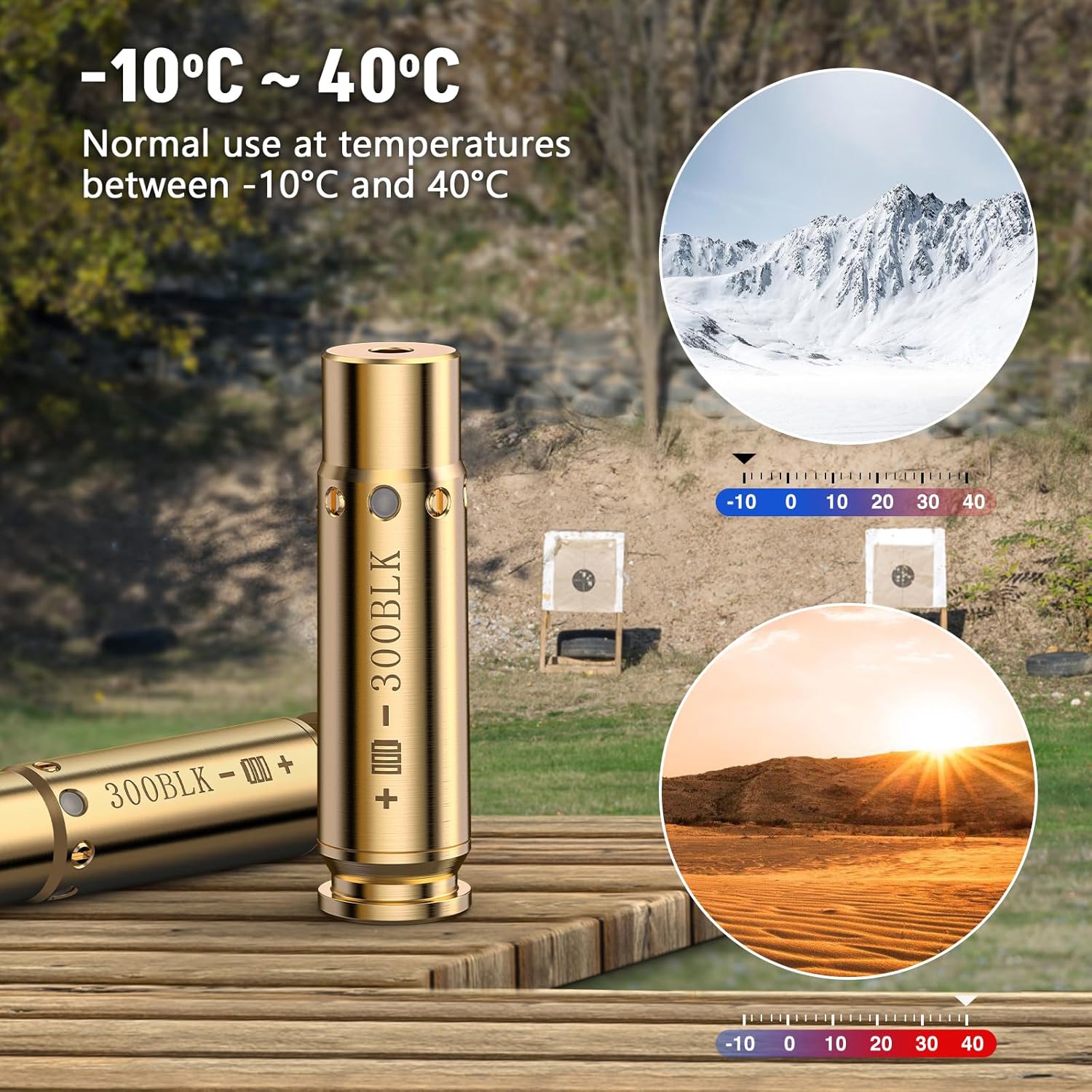
Price: $19.99 - $18.99
(as of Sep 08, 2025 09:22:32 UTC – Details)




